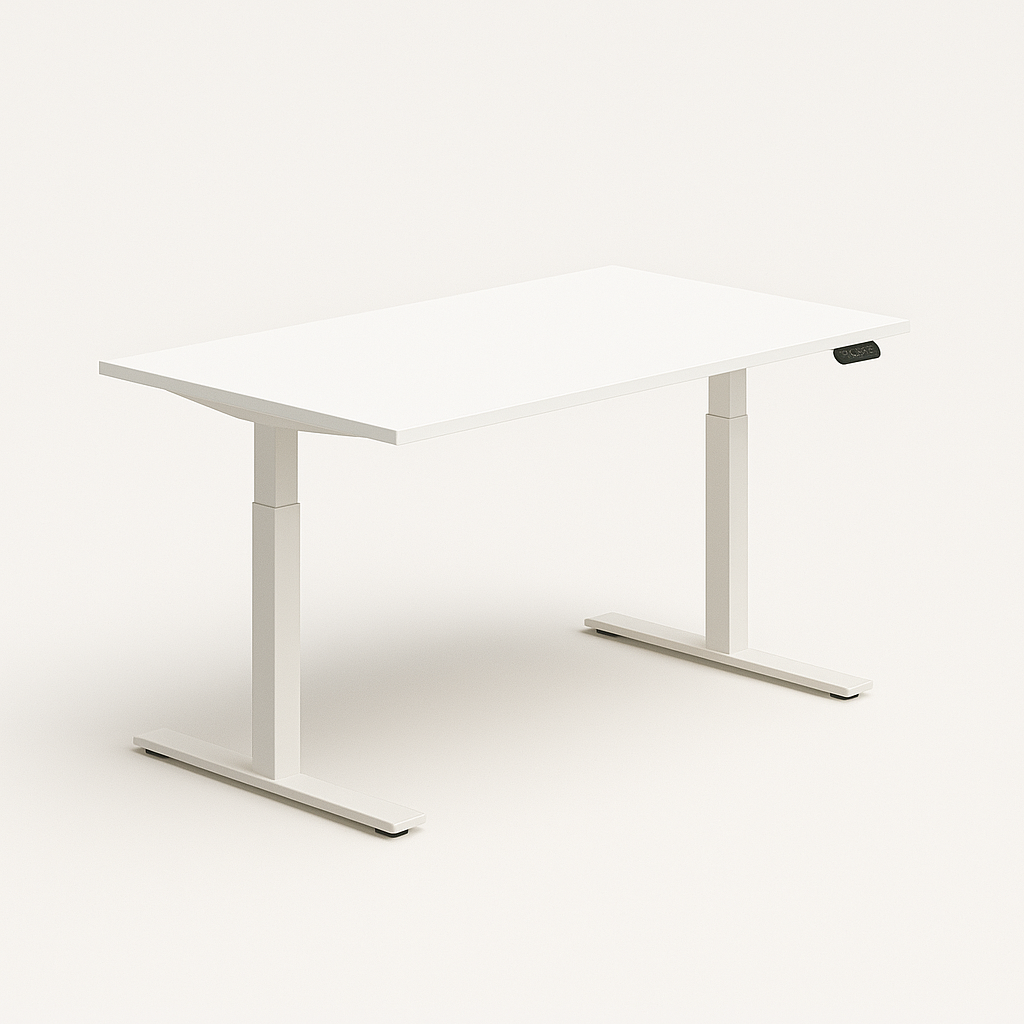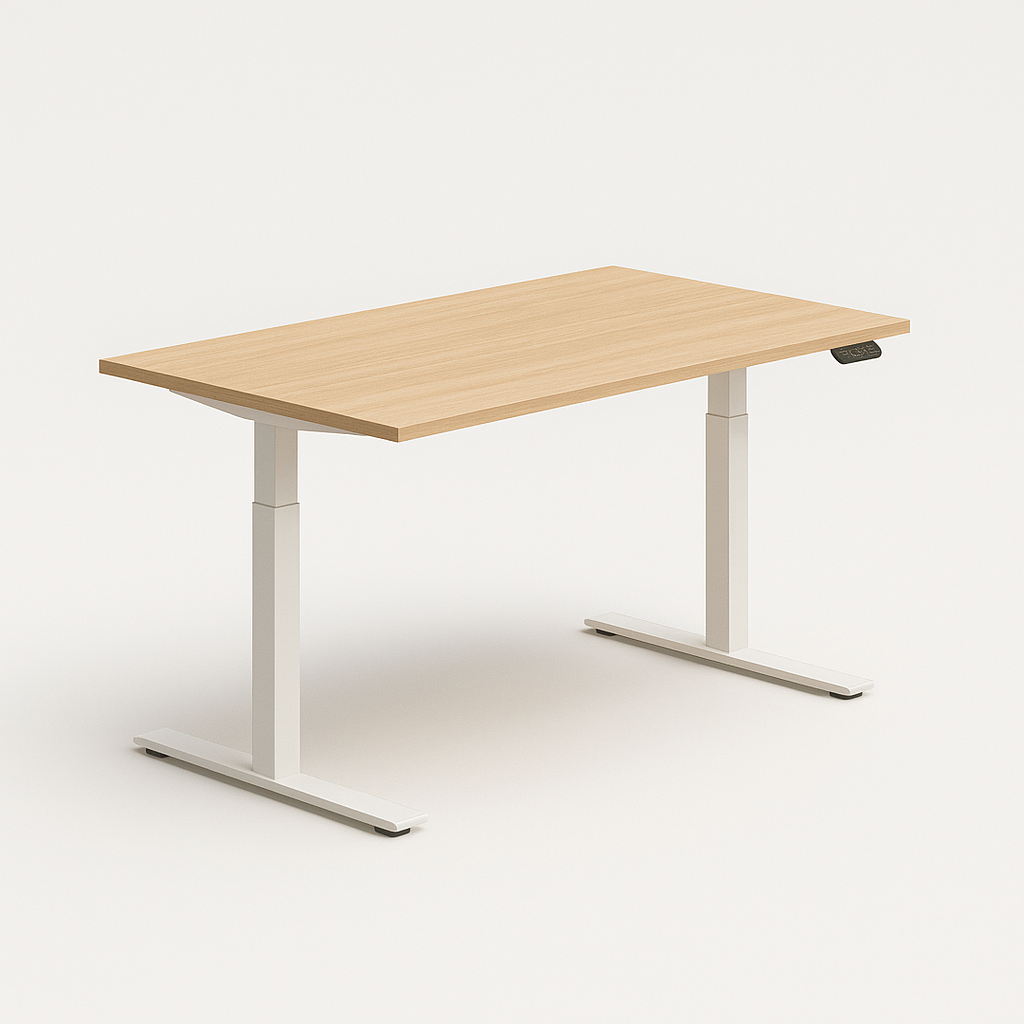Master the art of ergonomic workspace design with our complete standing desk setup guide.
Ergonomic Workspace Design: Complete Standing Desk Setup Guide
Creating an ergonomically optimized workspace with a standing desk requires understanding the intricate relationship between human anatomy, workplace design, and productivity. This comprehensive guide will help you design a workspace that not only prevents injury but actively promotes health, comfort, and peak performance.
Understanding Ergonomic Principles
The Foundation of Ergonomic Design
Human-Centered Approach
Ergonomics isn't just about adjusting furniture—it's about designing your workspace to fit your body's natural mechanics:
**Neutral body positioning** to minimize stress on joints and musclesNatural movement patterns that support circulation and flexibilityAccommodation for individual anthropometric differencesIntegration of rest and recovery principlesThe Ergonomic Triangle
Every ergonomic workspace balances three critical elements:
1. **Physical Comfort**: Reducing strain and promoting natural postures
2. **Cognitive Efficiency**: Supporting mental focus and decision-making
3. **Behavioral Sustainability**: Encouraging healthy work habits long-term
Biomechanical Considerations
Spinal Alignment Priorities
Maintain the spine's natural S-curve in all positions**Equal weight distribution** across both sides of the bodyDynamic movement to prevent static loadingSupport for transitional movements between positionsJoint Angle Optimization
90-degree rule: Elbows, hips, and knees at approximately 90 degreesNeutral wrist positioning to prevent carpal tunnel syndromeShoulder blade stability and proper arm supportAnkle and foot positioning for optimal circulationComprehensive Standing Desk Setup
Desk Height Calculations and Adjustments
Precise Height Determination
Standing desk height isn't one-size-fits-all. Use these formulas for optimal positioning:
For Users 5'0" to 6'8"
Elbow height method: Measure elbow height while standing with arms relaxedSubtract 1-2 inches for keyboard/mouse surfaceAdd 4-6 inches for monitor platform if neededAccount for keyboard thickness and wrist rest heightFine-Tuning Adjustments
Morning vs. afternoon variations: Height may need 0.5-1" adjustmentShoe heel height considerationsAnti-fatigue mat thickness compensationPersonal comfort preferences and adaptationMonitor Positioning Excellence
Single Monitor Optimization
**Top of screen at eye level** when looking straight aheadScreen distance: 20-26 inches (arm's length)Slight downward gaze angle: 10-15 degreesScreen tilt: 10-20 degrees backward from verticalMulti-Monitor Configurations
Dual Monitor Setup
**Primary monitor** directly in front of youSecondary monitor angled 15-30 degrees maximumBoth monitors at equal height and distanceBezel gap minimized for smooth eye transitionTriple Monitor Systems
Center monitor as primary focus point**Side monitors angled 15-20 degrees** inwardConsistent height across all three screensConsider curved monitor alternatives for better ergonomicsUltra-Wide Monitor Considerations
**Center important content** in middle third of screenUse software to create virtual zonesConsider monitor arm for easy adjustmentMay require slightly greater viewing distanceKeyboard and Mouse Ergonomics
Keyboard Positioning
**Surface 1-2 inches below elbow height**Keyboard slope: 0-15 degrees negative tilt preferredAdequate space for palm rest (4-6 inches)Numeric keypad considerations for mouse placementAdvanced Keyboard Options
**Split keyboards** for shoulder alignmentErgonomic keyboards with curved layoutsMechanical switches for reduced finger strainProgrammable keys for efficiency gainsMouse Optimization
**Same height as keyboard surface**Close proximity to keyboard (within 6 inches)Mouse size appropriate for hand dimensionsConsider trackball or vertical mouse alternativesLighting Design for Eye Health
Multi-Layer Lighting Strategy
Ambient Lighting
**Soft, even illumination** throughout the space300-500 lux for general office workAvoid harsh shadows and bright spotsUse multiple light sources for balanceTask Lighting
**Adjustable desk lamps** for specific activities500-1000 lux for detailed workPosition to avoid screen glare and shadowsLED lights with adjustable color temperatureBias Lighting
**LED strip behind monitors** reduces eye strain6500K color temperature matches daylight10% of screen brightness intensitySignificant reduction in eye fatigue during long sessionsAdvanced Ergonomic Accessories
Standing Support Systems
Anti-Fatigue Mat Selection
**3/4 to 1-inch thickness** for optimal cushioningHigh-density foam or gel core constructionBeveled edges for trip preventionEasy-to-clean, antimicrobial surfaceMat Positioning Strategy
**Centered under standing position**Extended area for side-to-side movementConsider interlocking tiles for larger spacesReplacement schedule every 12-18 monthsDynamic Support Options
Balance Boards and Rockers
**Gentle movement** to engage core musclesAdjustable resistance levelsNon-slip surfaces for safetyStart with 15-minute intervalsFootrests and Rails
**Adjustable height footrests** for position varietyUnder-desk foot rails for leg positioningRocking footrests for active movementConsider both feet and single-foot optionsSeating Solutions for Sit-Stand Balance
Height-Adjustable Stools
**Quick height adjustment** mechanismsComfortable seat with back support optionFootrest for shorter usersEasy mobility with castersSaddle Stools
**Open hip angle** promotes better postureEngages core muscles while seatedGood transition between sitting and standingRequires adjustment period for comfortEnvironmental Optimization
Temperature and Air Quality
Thermal Comfort Zones
**68-72°F optimal temperature** rangeHumidity levels between 40-60%Air circulation to prevent stuffinessPersonal fans for individual controlAir Quality Improvements
**HEPA air purifiers** for allergen controlPlants for natural air cleaningRegular HVAC filter changesVolatile organic compound reductionAcoustic Environment
Noise Level Management
**45-55 dB optimal** for focused workWhite noise or nature sounds for maskingSound-absorbing materials and furnishingsQuiet equipment selection (fans, computers)Privacy and Concentration
**Visual barriers** for open office environmentsNoise-canceling headphones for deep workDesignated quiet zones and communication protocolsPhone booth areas for calls and meetingsTechnology Integration
Cable Management Systems
Under-Desk Organization
**Wire management trays** for power and data cablesCable spines for vertical routingAdhesive clips for desk edge managementPower strips with surge protection and USB portsDesktop Cleanliness
**Minimal cable visibility** for reduced distractionWireless peripherals where appropriateDocking stations for laptop usersIntegrated charging solutionsSmart Workspace Features
Automated Adjustments
**Memory presets** for personalized heightsSmartphone apps for remote controlCollision detection for safetyUsage tracking and remindersHealth Monitoring Integration
**Posture monitoring devices**Movement tracking and remindersIntegration with fitness trackersWorkplace wellness dashboardsSpecialized Considerations
Industry-Specific Adaptations
Creative Professionals
**Large monitors or multiple displays** for design workGraphics tablets and stylus integrationColor-accurate lighting for visual workFlexible positioning for drawing and designData and Analytics Workers
**Multiple monitor setups** for data visualizationErgonomic keyboards for extensive typingDocument holders for reference materialsEye strain prevention for screen-intensive workCustomer Service Representatives
**Headset compatibility** and storageEasy transition between sitting and standing during callsReference material accessibilityNoise management for phone workPhysical Accommodation Needs
Height Variations
**Desk range accommodation** for very tall or short usersFootrest requirements for shorter individualsMonitor arm adjustability for height differencesCustom solutions for extreme anthropometric needsMobility Considerations
**Wheelchair accessibility** optionsAdjustable desk heights for different usersClear pathways and maneuvering spaceAccessible storage and controlsHealth Monitoring and Assessment
Regular Ergonomic Evaluations
Self-Assessment Tools
**Monthly comfort evaluations**Productivity and energy trackingPain and discomfort identificationAdjustment needs assessmentProfessional Assessments
**Annual ergonomic evaluations** by certified professionalsWorkplace injury prevention programsCustom recommendations for individual needsGroup training and education sessionsWarning Signs and Interventions
Early Indicators of Problems
**Persistent discomfort** in neck, shoulders, or backNumbness or tingling in hands or armsEye strain and vision problemsFatigue that doesn't improve with restImmediate Interventions
**Position adjustments** and equipment modificationsMovement and stretching protocolsEnvironmental changes (lighting, temperature)Professional consultation for persistent issuesReturn on Investment
Health Cost Savings
Reduced Healthcare Expenses
**Lower rates of musculoskeletal disorders**Decreased vision problems and eye strainReduced stress-related health issuesFewer workplace injury claimsProductivity Improvements
**15-25% increase** in daily productivityReduced absenteeism and sick daysEnhanced focus and cognitive performanceBetter employee satisfaction and retentionLong-Term Benefits
Career Longevity
**Sustainable work practices** for long-term career healthReduced risk of chronic workplace injuriesEnhanced professional performance and advancementBetter work-life balance and overall wellbeingImplementation Timeline
Phase 1: Assessment and Planning (Week 1)
**Comprehensive workspace evaluation**Individual needs assessmentEquipment selection and orderingBaseline health and comfort measurementsPhase 2: Installation and Initial Setup (Week 2)
**Professional installation** and configurationInitial height and positioning adjustmentsAccessory integration and testingBasic training and orientationPhase 3: Optimization and Fine-Tuning (Weeks 3-4)
**Daily adjustment and refinement**Comfort monitoring and feedbackAdditional accessory integrationMovement and break routine developmentPhase 4: Long-Term Optimization (Weeks 5-8)
**Sustained practice development**Advanced feature utilizationHealth outcome trackingContinuous improvement processesConclusion: Your Ergonomic Excellence Journey
Creating an ergonomically optimized standing desk workspace is an investment in your long-term health, productivity, and professional success. By following the comprehensive guidelines in this guide, you'll create a workspace that not only prevents injury but actively promotes your wellbeing and performance.
Remember that ergonomics is not a one-time setup but an ongoing process of refinement and adaptation. Your needs may change over time, and your workspace should evolve accordingly. Regular assessment, professional guidance when needed, and attention to your body's feedback will ensure long-term success.
Ready to create your perfect ergonomic workspace? Explore Fittrock's premium standing desk collection, designed with advanced ergonomic principles and backed by comprehensive setup support.
---
Dr. Kavya Reddy is a certified ergonomics professional and occupational health specialist with over 15 years of experience in workplace design and injury prevention. She holds a Ph.D. in Human Factors Engineering and is a board-certified professional ergonomist.


